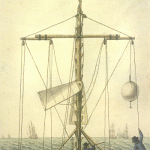Research led by economists at the University of Warwick reveals that medieval England was not only far more prosperous than previously believed, it also actually boasted an average income that would be more than double the average per capita income of the world’s poorest nations today.
Summary & full paper (pdf): “British Economic Growth 1270-1870”, Stephen Broadberry & others, University of Warwick. Previously: they did not work that hard in those days, either.





